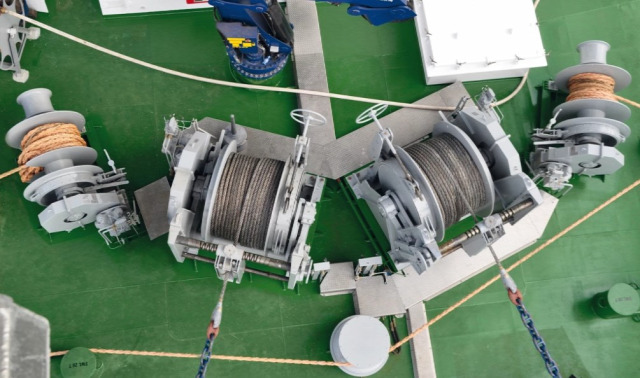Hydraulic mooring winches play a crucial role in maritime operations, providing reliable and efficient control over vessel mooring. Proper installation of hydraulic mooring winches is essential to ensure their optimal performance and safe operation. In this article, we will discuss key installation tips for hydraulic mooring winches, focusing on best practices that can help achieve smooth operations and maximize the longevity of the equipment.

Site Assessment and Preparation
Before installing a hydraulic mooring winch, conduct a thorough assessment of the installation site. Consider factors such as the load capacity of the mooring winch, available space, and the structural integrity of the mounting surface. Ensure that the site is level, stable, and capable of supporting the weight and forces exerted by the winch during operation.
Foundation Construction
A solid foundation is crucial for the stability and proper functioning of a hydraulic mooring winch. Construct a robust foundation that can withstand the forces generated during mooring operations. Follow the manufacturer's guidelines for foundation specifications, including dimensions, concrete strength, reinforcement, and anchor points. Properly cured and leveled foundations are essential for optimal winch performance.
Mounting and Alignment
Accurate mounting and alignment of the hydraulic mooring winch are critical for its smooth operation. Ensure that the winch is securely fastened to the foundation using appropriate bolts or anchor points. Use a level or laser alignment tool to ensure the winch is correctly aligned. Proper alignment helps prevent undue stress on the winch components, ensures smooth wire rope movement, and facilitates efficient operation.
Hydraulic System Installation
The hydraulic system of the mooring winch requires careful installation to ensure proper functioning. Connect the hydraulic hoses and fittings according to the manufacturer's instructions. Pay attention to the correct routing of the hoses, ensuring they are protected from damage and do not interfere with other components. Use high-quality fittings and secure all connections tightly to prevent hydraulic leaks.
Electrical Connections
If the hydraulic mooring winch incorporates electrical components, such as control panels or safety features, ensure proper electrical connections. Follow electrical codes and regulations, and consult the manufacturer's guidelines for wiring requirements. Verify that all electrical connections are secure, properly insulated, and protected from moisture or corrosive elements. Test the electrical system before operation to ensure proper functionality.
Lubrication and System Testing
Before putting the hydraulic mooring winch into operation, perform thorough system testing and lubrication. Ensure that the hydraulic system is properly filled with the recommended hydraulic fluid, and check for any leaks or abnormalities. Follow the manufacturer's recommendations for lubricating moving parts, such as bearings and gears. Conduct a test run of the winch under controlled conditions to verify its performance and identify any potential issues.
Operator Training and Safety Considerations
Proper training of operators is essential to ensure the safe and efficient operation of hydraulic mooring winches. Provide comprehensive training on the winch's operation, safety features, and maintenance requirements. Emphasize the importance of adhering to safety protocols, such as wearing appropriate personal protective equipment and following proper operating procedures. Regularly review and reinforce safety guidelines to minimize the risk of accidents or equipment damage.
Conclusion
The installation of hydraulic mooring winches requires careful planning and adherence to best practices to ensure smooth operations and maximize equipment longevity. From site assessment and foundation construction to proper mounting, alignment, and hydraulic system installation, each step plays a crucial role in the successful installation of the mooring winch.
By following these installation tips and consulting the manufacturer's guidelines, maritime operators can ensure that hydraulic mooring winches perform optimally, providing reliable control over vessel mooring operations. Investing time and effort in the proper installation of hydraulic mooring winches pays off in the form of improved safety, operational efficiency, and extended service life.

